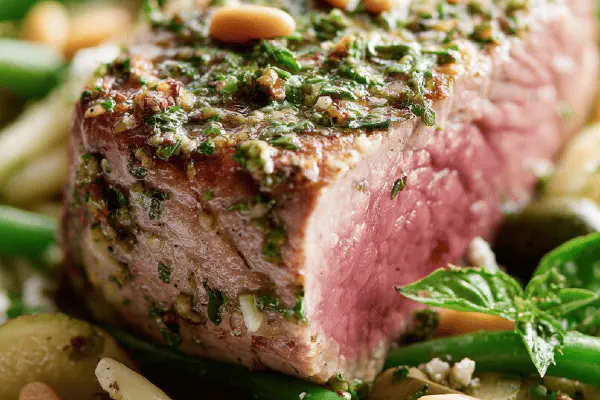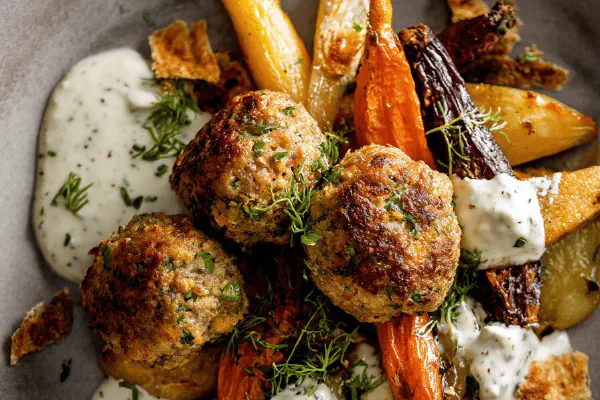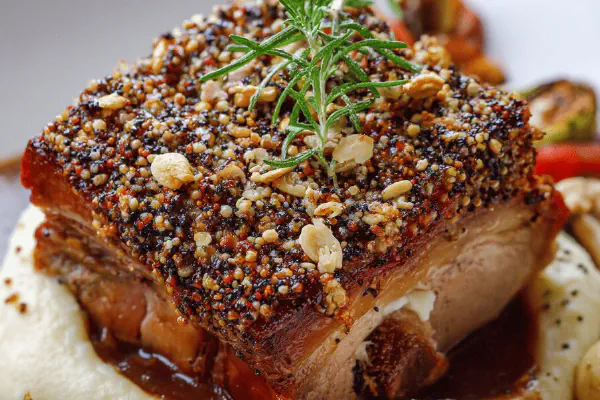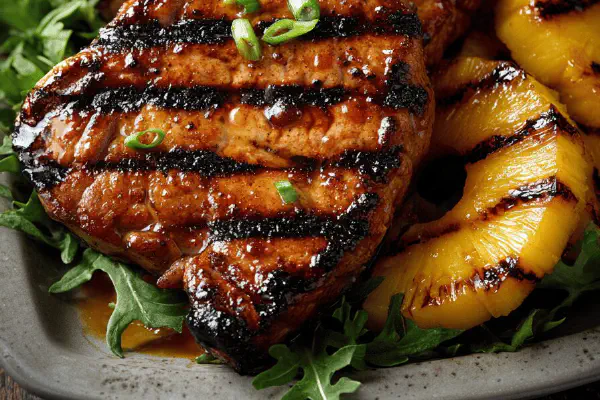Slow Pork Confit
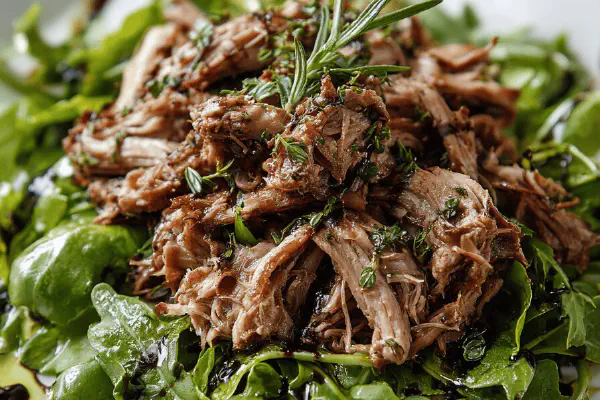
By Emma
Certified Culinary Professional
Ingredients
- 2 pork filets divided in 2–3 pieces
- 6 garlic cloves halved
- 18 g coarse salt
- 4 sprigs fresh thyme
- 700 g rendered goose fat
- 15 ml porcini powder marinade spice blend
- 5 whole cloves
- 2 bay leaves
- 10 whole black peppercorns
About the ingredients
Method
- Arrange pork pieces in shallow dish. Rub surface vigorously with a garlic clove half.
- Combine salt with leaves from 2 thyme sprigs. Massage this salt-herb mix into pork outside.
- Wrap tightly with plastic wrap, refrigerate 3 ½ hours. Too short leaves it bland; over 4 hours dries out.
- Drain marinade juice and blot pork dry.
- Heat goose fat slowly in heavy pan over very low heat till melted but not smoking.
- Add pork, remaining thyme, porcini marinade spices, garlic cloves, whole cloves, bay leaves, peppercorns. Pork must be submerged completely.
- Bring fat just to a low simmer—tiny bubbles at edge not rolling boil. Cook gently ~1¾ hours. Stir occasionally; listen for gentle crackle and fat sound.
- Check tenderness by poking pork with fork; should pull apart easily with slight resistance.
- Use slotted spoon, transfer pork to bowl.
- Strain fat through fine mesh to remove herbs/spices; let cool but remain liquid.
- Place pork in sterilized jar (Mason or equivalent). Pour warm filtered fat over until fully covered.
- Cool jar at room temperature until solid, then refrigerate.
- Before serving, remove pork, discard hardened surface fat layer if thick or grayish.
- Reheat pork in low oven (120–130C/250–265F), covered, until warmed through and soft.
- Shred meat with forks and pile on mesclun greens. Drizzle with decent olive oil and balsamic vinegar.
Cooking tips
Chef's notes
- 💡 Cut pork filets into 2 to 3 pieces so heat penetrates evenly; thick chunks slow down cooking and risk drying out. Rub garlic halves firmly but don’t crush; release aroma without bitterness. Salt and fresh thyme crushed together breaks tissue for deeper flavor. Wrap tight in plastic to keep fridge odors away. Three and a half hours marinading hits balance; longer dries out proteins.
- 💡 Rendered goose fat melts slow, needs low heat. If fat smokes or bubbles fast—too hot. Simmer fat barely bubbling, like tiny edge bubbles not a boil. Use heavy pan to keep heat steady. Stir spices gently, no clumps or floating. Cloves, bay leaves, peppercorns give mild infusion. Whole spices not ground maintain texture. Check pork by fork poke, meat should give with slight pull, not mushy nor stiff.
- 💡 Marinade juice removal important; blot pork dry so fat bonds better, prevents watery stew effect. After cooking, skim pork carefully with slotted spoon, no bits left in fat or cloudy seal. Pour fat warm but not hot over meat in jar, steady pour to avoid trapped air bubbles causing oxidation. Cool at room temp until solid fat seal. Refrigerate next. Surface fat may gray or thicken; remove that layer before reheating.
- 💡 Reheat pork slow in low oven, 120 to 130 Celsius or 250 to 265 Fahrenheit, covered dish or foil wrap to hold moisture. Oven method avoids drying edges you get in microwaves. Shred pork with fork tines; look for slight moisture sheen, not dry stringy fibre. Plate on peppery mesclun or arugula greens, drizzle good olive oil and sharp balsamic vinegar for contrast. Keeps weeks refrigerated; flavor deepens, fat seals freshness.
- 💡 Swap herbs if needed; rosemary punches up aroma, stronger than thyme. Porcini powder stands in for spice blends, earthy layer without seasoning overload. Duck fat or pork lard can replace goose fat, but texture and flavor lighten or change mouthfeel. Garlic halves uncrushed for mild aroma. Always check cooking temp visually and by listening—fat cracking softly means right temp, louder bubbling or boiling kills texture. Timing varies on pork cut thickness.
Common questions
Can I use duck fat instead?
Yes. Duck fat melts differently, quicker; flavor less intense. Texture lighter but similar. Adjust cooking time slightly, watch heat low. Fat type changes mouthfeel mostly, not much else.
How to tell pork is done?
Fork test. Meat should pull apart easy with some resistance; not falling apart mushy nor tight. Look for gentle fat crackle sound, slight bubbling at simmer edge only. Visual: meat soft but holds shape. Don’t rush, timing flexible.
My fat boiled and pork tough. Fix?
Lower heat way down. Fat must simmer softly or just warm. Rapid bubbling breaks meat fibers tough. If ruined, shred meat, use in stews or blending. Next try keep temp steady, stir gently, listen for small crackle.
How store leftovers?
Covered jar in fridge best. Fat seals freshness weeks. Can freeze, but fat texture might change; thaw gently. Avoid air exposure or odors. Wrapped tight foil or airtight containers keep moisture and stop fridge smells. Use within two weeks for best taste.
